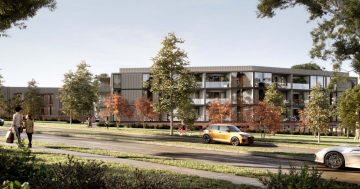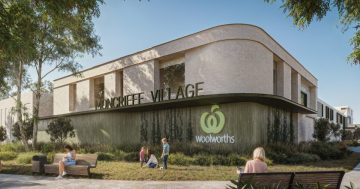Founded in 1994, Palmerston is another of the Gungahlin region’s more established suburbs and, as such, has a level of stability that’s seen little change in the past few years.
The most recent Census notes the population here is 5525, which is about 150 people less than the population five years prior. But the housing stock and demographic has changed little in that time.
So, let’s look into Palmerston and the people who call this suburb home.
Who lives in Palmerston
In many ways Palmerston reflects the wider ACT experience. Here the median age sits squarely on the ACT median at 35-years-old. That’s three years younger than the national norm and a median that’s two years older in Palmerston than it was in 2011.
The population is fairly evenly dispersed, with 19.4% aged under 15, and 9.8% aged above 65.
Of those 15 and over, half (50.2%) are married, 35.6% have never been married, 11.1% are either separated or divorced, and 3.1% are widowed.
Most residents (75.1%) live in family households, 21.3% live alone, and 3.6% are in share accommodation.
Of those family households, the majority (50.4%) are couples with children and they have on average 1.8 children in their home. A further 33.4% are couples without children, 14.9% are single parent homes, and 1.4% of households comprise “other family”.
How Palmerston fares financially
Palmerston residents earn a median weekly income only marginally below the ACT norm. Each week they take home $2005, compared to an ACT statistic of $2070, and a national figure of $1438.
Just over a quarter of households (25.9%) have a gross income of above $3000 each week.
That means, by and large Palmerston residents are financially better off than they were in 2011. Then the median income was $1923, and 22.9% had a gross income above $3000 each week.
Their accommodation expenses have also decreased in recent years. In 2011, Palmerston residents paid a median monthly mortgage of $2090, ($77 below the Territory norm, and $290 above the national statistic).
In 2016 that had dropped $1950 ($108 below the Territory figure, and $195 above the national median).
Meanwhile, rents have also decreased. In 2011 Palmerston renters paid $395 a week. That was $15 more than the Territory median and $110 more than the national figure. In 2016 they paid exactly the same as the rest of the ACT with $380 outlaid on rent each week. It remained a little more than the national figure of $335.
How Palmerston residents live
When it comes to housing and tenure, Palmerston also closely reflects the ACT norm. Here, the majority of houses are separate, most are three-bedroom and the bulk are resided in by owner/occupiers. The most notable difference is the absence of flats and apartments in the suburb.
Over half (57.9%) of the Palmerston housing stock is separate houses, while 42% is semi-detached homes. That does reflect a slight change in the housing stock from 2011, when 64.6% was separate housing and only 35.3% was semi-detached.
Most properties (45.6%) comprise three bedrooms, 38% are four bedrooms or more, and 13.7% are two-bedroom homes.
Meanwhile in terms of tenure, there’s a fairly even split; 39.5% of households incur a mortgage, 27.6% are owned outright, and 30.4% are rented.
This closely reflects the ACT statistics but indicates more people own their own homes outright in Palmerston than they did in 2011. At that stage 41.5% of households paid a mortgage, 25.2% were owned outright, and 31.5% were rented.
Where Palmerston residents come from
Like the ACT and Australia in general, approximately two thirds (65.5%) of Palmerston residents were born in Australia. Other common countries of origin include China (4%), India (2.7%), England (2.2%), Vietnam (2%) and Philippines (1.4%). That also reflects little change on the demographics from five years prior.
As a result, the majority of residents (66.1%) speak only English at home, with other common languages spoken including Mandarin (4.6%), Vietnamese (2.6%), Cantonese (1.9%), Hindi (1.4%) and Urdu (1.3%).
The final word
Well established, relatively well off and definitely stable, Palmerston closely reflects the general statistics of the ACT. It features a working population in the middle of their careers who are striving to pay off their average sized home.









